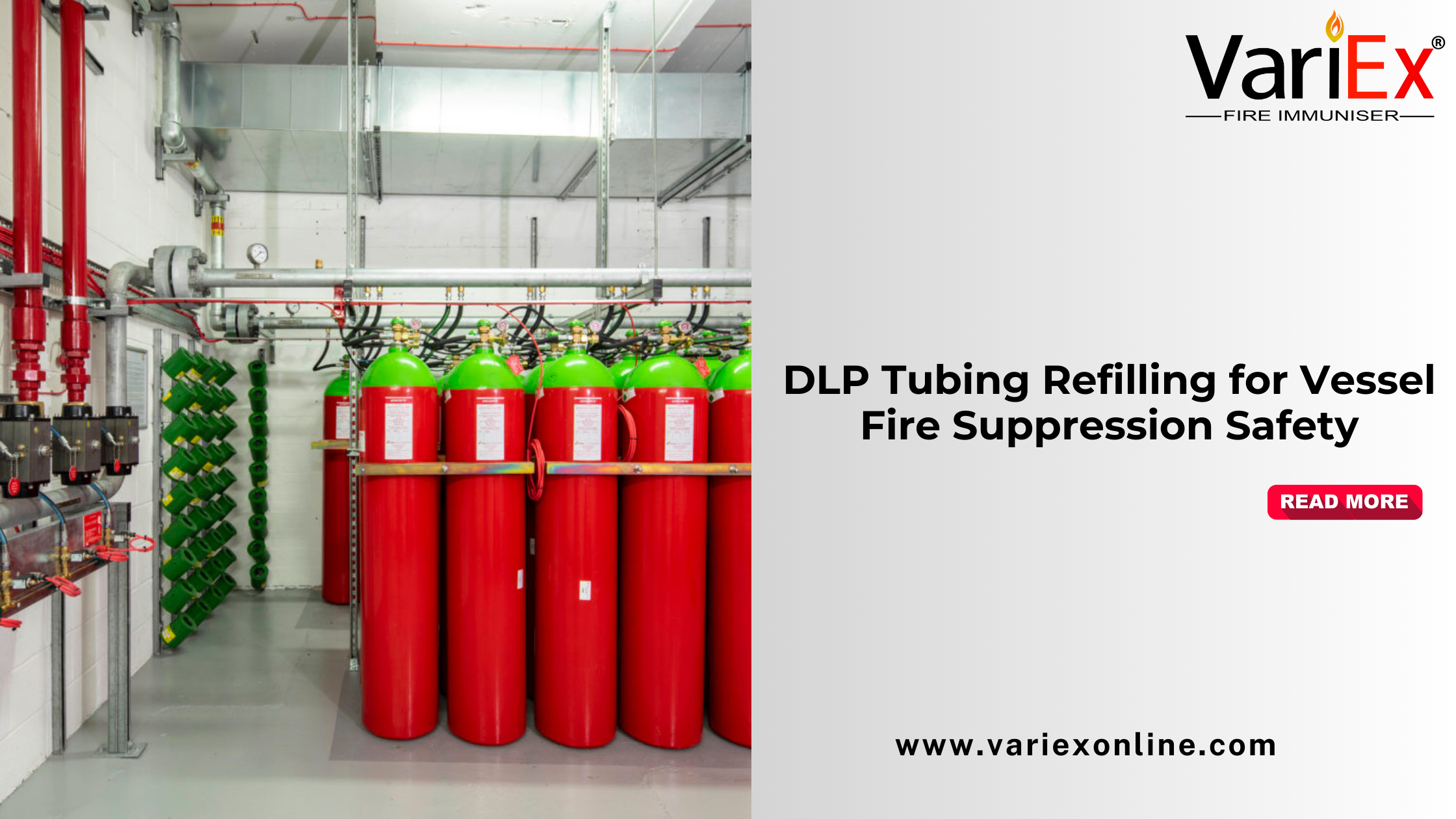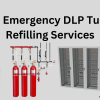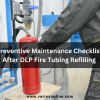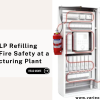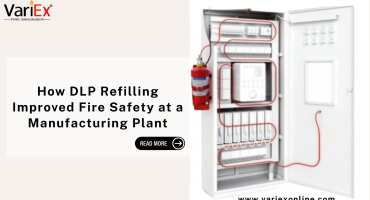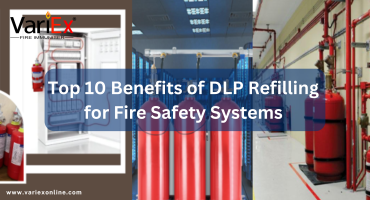![]()
Fire Immuniser
+91-7829629111
Email: info@variex.in
Varistor Technologies Pvt. Ltd.
Block-1, First Floor, Ardente Office One, Hoodi Circle, ITPL Main Road, Bengaluru, Karnataka 560048, IN
DLP Tubing Refilling for Vessel Fire Suppression Safety
DLP Tubing Refilling for Vessel Fire Suppression Safety
Marine vessels such as cargo ships, oil tankers, yachts, and passenger ferries face unique fire hazards due to the combination of confined spaces, combustible materials, and continuous machinery operation. In these environments, DLP (Direct Low Pressure) tubing fire suppression systems offer an automatic, reliable, and efficient way to control fires at the source.
One of the most critical aspects of maintaining these systems is timely and professional DLP tubing refilling. Neglecting refills can compromise fire safety, risking costly equipment damage and putting lives in danger.
This blog covers everything you need to know about DLP tubing refilling for vessel fire suppression safety, along with a preventive maintenance table, and practical tips for marine fire protection.
What is a DLP Tubing Fire Suppression System?
DLP (Direct Low Pressure) tubing systems are a type of automatic fire suppression solution that uses flexible polymer tubing to detect and suppress fires directly at the source. Installed in engine rooms, fuel storage areas, and electrical panels, these systems use tubing that bursts upon heat exposure, releasing a fire suppression agent immediately.
Unlike conventional systems, DLP tubing does not rely on separate sensors and actuators, making it ideal for the harsh and compact environments of marine vessels.
Why is Refilling DLP Tubing Crucial for Vessels?
Over time, the fire suppression agent in the tubing system may be discharged due to fire events, leaks, or periodic maintenance tests. Refilling ensures that the system remains charged, pressurized, and ready for deployment, especially in vessel environments where emergency response time is limited.
Key reasons to refill:
-
✔️ Restores the system's operational readiness.
-
✔️ Maintains compliance with maritime fire safety regulations like IMO MSC.1/Circ.1318.
-
✔️ Prevents agent degradation from environmental exposure.
-
✔️ Minimizes the risk of downtime during voyages.
When Should Vessels Schedule DLP Tubing Refilling?
Vessel operators should follow these recommended refill intervals:
-
🔄 Immediately after a discharge event.
-
🔄 Annually, as part of scheduled maintenance.
-
🔄 Whenever a pressure loss or leak is detected.
-
🔄 As advised during compliance inspections.
Failing to refill on time can result in non-compliance fines and jeopardize crew safety.
Step-by-Step DLP Tubing Refilling Process for Vessels
1. System Inspection
-
Inspect tubing for cracks, wear, or corrosion.
-
Verify that all fittings and connectors are intact.
2. Depressurization
-
Safely depressurize the system according to manufacturer guidelines.
3. Leak Test (Pre-Fill)
-
Perform a preliminary leak test using an inert gas.
4. Agent Refilling
-
Refill the system with the recommended fire suppression agent (e.g., Novec 1230, HFC-227ea).
-
Ensure the correct fill weight and pressure levels are met.
5. Post-Refill Testing
-
Conduct pressure checks to confirm system integrity.
-
Perform functional discharge simulations.
6. Documentation
-
Record the refill date, agent type, and inspection results in the vessel’s maintenance log.
Recommended Fire Suppression Agents for Marine DLP Systems
| Agent Type | Properties | Suitability for Vessels |
|---|---|---|
| Novec 1230 | Non-conductive, zero ozone depletion | Ideal for electrical & engine room applications |
| HFC-227ea (FM-200) | Clean agent, fast suppression | Effective for machinery spaces |
| CO₂ | Cost-effective, readily available | Used for isolated compartments, caution for toxicity |
| Inert Gas (IG-541) | Eco-friendly, oxygen displacement | Suitable for occupied areas when properly ventilated |
Preventive Maintenance Table for Vessel DLP Tubing Systems
| Maintenance Task | Recommended Frequency | Responsible Party | Tools Required | Remarks |
|---|---|---|---|---|
| Visual inspection of tubing & fittings | Monthly | Onboard maintenance crew | Flashlight, visual checklist | Look for physical damage or wear |
| Pressure check of refill agent | Quarterly | Marine fire safety technician | Pressure gauge | Ensure optimal system pressure |
| Leak detection and sealing | Quarterly | Certified marine safety crew | Leak detection tools | Detect & correct micro-leaks |
| Fire suppression agent refill verification | Annually or after discharge | Certified fire safety provider | Weighing scale, refill kits | Verify agent levels and refill as necessary |
| Functional testing of system activation | Bi-annually | External service company | Test panels, simulation tools | Simulate fire conditions without agent release |
| Compliance audit | Annually | Maritime safety inspector | Compliance checklist | Ensure IMO & local regulatory compliance |
| Crew training on fire suppression system | Annually | Ship Safety Officer | Training modules | Enhance emergency response readiness |
| Emergency shutdown & override check | Quarterly | Chief Engineer | Functional checklists | Ensure manual activation options work properly |
Challenges in Vessel Fire Suppression Maintenance
Maintaining fire suppression systems on vessels presents specific challenges, including:
-
🌊 Saltwater corrosion: Tubing may degrade faster in marine environments.
-
🔋 Vibration & wear: Continuous engine vibration affects tubing joints and connections.
-
🌡️ Temperature extremes: Wide temperature fluctuations affect agent pressure levels.
-
🔧 Limited service access: Remote vessel locations make professional servicing difficult.
-
⚖️ Regulatory compliance: Vessels must comply with international marine fire safety codes.
Proactive refilling and maintenance help overcome these challenges.
Benefits of Professional DLP Tubing Refilling for Vessels
-
✅ Minimizes fire-related downtime during critical operations.
-
✅ Ensures the safety of crew, passengers, and cargo.
-
✅ Protects high-value assets like engines, control panels, and fuel storage.
-
✅ Provides peace of mind with compliance to IMO and SOLAS regulations.
-
✅ Reduces insurance premiums due to enhanced fire preparedness.
Regulatory Compliance for Marine Fire Suppression Systems
Vessels equipped with fire suppression systems must comply with:
-
IMO MSC.1/Circ.1318 - Guidelines for fixed gas fire-extinguishing systems
-
SOLAS (Safety of Life at Sea) regulations
-
Flag state fire safety requirements
-
Classification society rules (e.g., ABS, DNV, BV)
Failing to refill or maintain your DLP system could result in operational bans, port detentions, or penalties.
Best Practices for Vessel Fire Safety Management
-
✔️ Schedule preventive maintenance in port to minimize disruption.
-
✔️ Always use certified fire suppression agents approved for marine use.
-
✔️ Maintain detailed service records for audits and inspections.
-
✔️ Train crew regularly on fire emergency protocols.
-
✔️ Conduct risk assessments for all critical vessel compartments.
Future Trends: Smart Monitoring for Marine Fire Suppression
Emerging technologies are enabling real-time monitoring of DLP systems using IoT-based pressure sensors and wireless alerts. These solutions provide instant notifications of leaks, discharges, or pressure drops—ideal for modernizing vessel fire safety.
Conclusion
DLP tubing fire suppression systems are a lifeline for vessel safety, but their reliability depends heavily on timely refilling and maintenance. By following a proactive refilling schedule and preventive maintenance plan, marine operators can ensure compliance, minimize fire risks, and protect both human lives and critical assets at sea.
Partner with certified marine fire safety professionals to conduct safe, compliant, and effective DLP tubing refilling services. Whether you manage a small yacht or a large cargo vessel, fire preparedness starts with regular maintenance and readiness checks.
Frequently Asked Questions
Vessel DLP tubing systems should be refilled annually or immediately after discharge.
Novec 1230 is widely recommended due to its zero ozone depletion and suitability for confined spaces.
Ideally, refilling should be done in port by certified technicians to ensure safety and compliance.
No, refilling should be done by certified marine fire safety professionals.
Delayed refilling increases fire risks, may lead to non-compliance fines, and could result in operational downtime.
Final Say
At VariEx.in and VariexOnline.com, we specialize in supplying and installing top-quality fire fighting systems and equipment. From fire extinguishers to advanced suppression systems, we offer comprehensive solutions tailored to your needs. Our experienced team ensures precise installation and maintenance for optimal safety.
Trust VariEx for reliable fire protection. Contact us online or call 7829629111 to learn more.
We specialize in manufacturing, supplying, and distributing a comprehensive range of fire fighting equipment, including state-of-the-art fire extinguishers. Read our most searched blogs and find interesting information on topics such as how to use a fire extinguisher, how to calculate fire fighting water tank capacity, fire extinguisher refilling, obtaining a Fire NOC, understanding fire fighting systems, types of fire protection systems, the fire hydrant system, and the fire sprinkler system. These resources provide essential knowledge for ensuring safety and compliance with fire safety regulations. Additionally, you can explore guides on the maintenance of fire protection equipment, the latest advancements in fire safety technology, and best practices for fire risk assessment and management.
Our expertise extends to fire alarm systems, fire hydrant systems, and fire suppression systems, including fire sprinklers. Each product meets rigorous international standards for reliability and performance, ensuring effective fire safety products tailored to diverse applications and industries. Additionally, we are providing Fire Extinguisher Refilling and AMC services to ensure ongoing maintenance and operational readiness of fire safety equipment.
"WHAT YOU CAN READ NEXT"
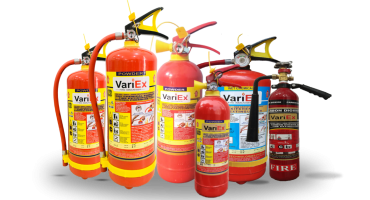 Read more +24 November 2023 in Fire Extinguisher
Read more +24 November 2023 in Fire ExtinguisherWhat types of fire extinguishers are available for different fire classes?
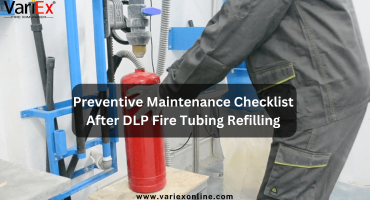 Read more +11 July 2025 in Fire Suppression
Read more +11 July 2025 in Fire Suppression

